Daily wipe-downs and quick vacuum passes keep appearances in check, but a proper reset demands a deeper dive that touches every surface, system, and forgotten corner.
Deep cleaning an office is a strategic operation that restores health standards, revives finishes, and resets workflows in a way that ordinary tidying never can. Elevating your routine from a simple office chore list to a comprehensive office cleaning process invests in fewer sick days, sharper first impressions, and longer-lasting furnishings.
Health, Productivity, and Brand Image
Employees breathe easier when allergens, dust, and microbial buildup are eliminated, which translates directly into clearer minds and higher output. Clients and visitors immediately sense the difference between a merely “clean-looking” lobby and one that feels fresh. Your brand image benefits from that sensory cue; cleanliness communicates detail-oriented professionalism more quickly than any brochure ever could.

Step 1: Audit the Space and Build a Cleaning Checklist
No two offices function exactly, so you begin by mapping what happens in each zone. A thorough walkthrough notes not just square footage but also behaviors: where employees congregate, where snacks spill, and where dust settles undisturbed.
You catalogue every desktop material, floor finish, and fabric type to match the right chemistry and technique. High-touch mapping pinpoints shared tech and door hardware so nothing escapes disinfection. This is how to clean an office with precision instead of guesswork, and it converts a generic list into a tailored plan that reflects real-world usage.
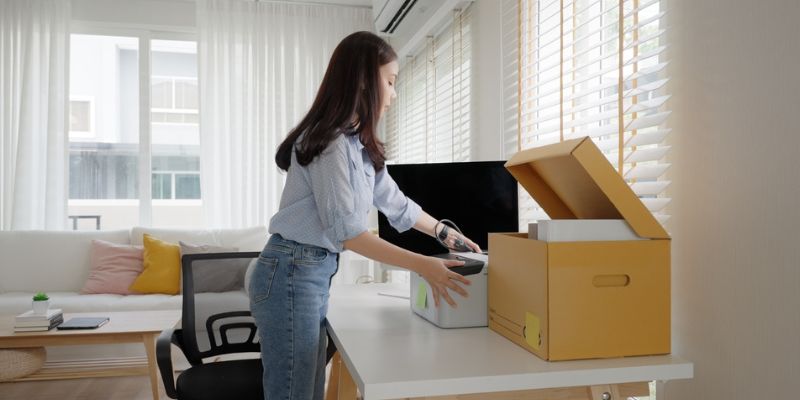
Step 2: Declutter and Pre-Stage Equipment Before Any Scrubbing Starts
Cleaning around piles of paper or jumbled power strips wastes time and leaves grime trapped underneath. The second step makes room for efficiency by clearing visual and physical obstacles.
Sensitive documents head to shredding or digital storage, cables get labeled and tidied, and desktops are cleared so disinfectants can contact every inch. This decluttering doubles as a productivity boost because employees return to streamlined workstations once the deep clean ends.
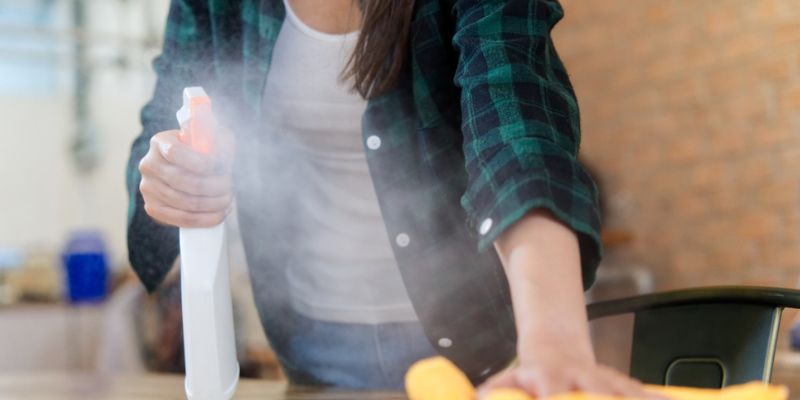
Step 3: Top-Down Dusting to Capture Allergens and Settled Particulates
Gravity is your ally when you start high and move low. By dusting ceilings, vents, and lights first, you prevent freshly scrubbed desks from catching a second wave of debris. Ceiling tiles hold surprising dust; HVAC vents accumulate pollen and construction residue; high ledges over cabinets breed cobwebs. Attending to these zones early ensures particulate matter falls to the floor where vacuums can capture it in one pass.
Electrostatic tools cling to dust rather than flicking it into the air. Long microfiber poles reach recessed can lights without ladders. These techniques minimize the re-deposition cycle that often plagues poorly executed top-down attempts.

Step 4: Deep-Cleaning Carpets, Hard Floors, and Baseboards
Once the airborne debris drops, the flooring becomes the focus. Sand, oils, and coffee stains silently cut fibers and dull finishes here. When quick dry times are crucial, carpets respond best to hot-water extraction for deep soil removal or low-moisture encapsulation.
Targeted spot treatments dissolve specific contaminants, such as greasy footprints near kitchens and tannins from spilled coffee, so the central cleaning doesn’t spread them around. Protecting existing wax or polymer finishes prevents unnecessary refinishing costs.

Step 5: Detail Disinfection of High-Touch Surfaces and Shared Tech
These micro-zones differentiate between “looks clean” and “is clean.” They require patience, correct contact times, and disciplined cloth rotation. Shared devices harbor up to ten times more bacteria than toilet seats. Disinfectant safe wipes and air-safe sprays for electronics deliver germ control without damaging equipment.

Step 6: Break Room and Restroom Sanitation
These spaces demand food-safe degreasers and mildew-fighting techniques that rival restaurant back-of-house protocols. Appliances collect splatters and sugar residues that host bacteria. Interior shelves get pulled, scrubbed, and sanitized. Faucets and aerators accumulate calcium deposits that need acid-based cleaners to restore flow and shine.
Steam cuts through embedded grime in grout without harsh chemicals. True odor neutralizers break down molecules rather than masking smells, and silicone caulk checks around sinks and backsplashes block moisture intrusion that leads to mildew.
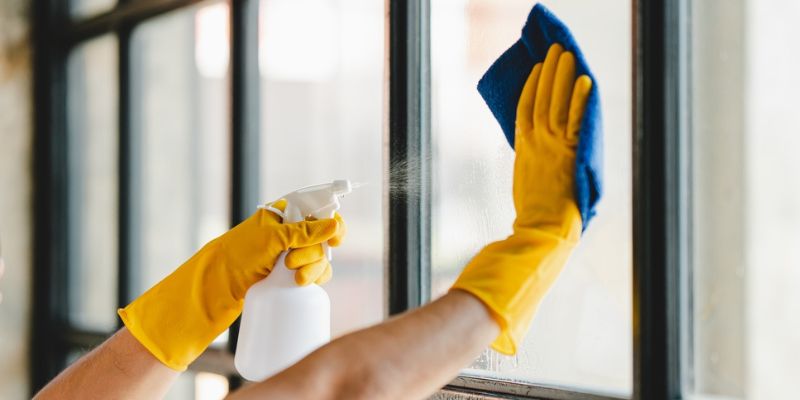
Step 7: Upholstery, Window Treatments, and Interior Glass Renewal
Soft surfaces and see-through planes are easy to forget but quick to betray dust with one sunbeam. Textiles trap allergens in fibers. Injection extraction tools gently lift soil from upholstery, while vacuuming and damp wiping blinds prevent dust cascades each time you adjust the slats. Acoustic panels require low-moisture methods to maintain sound absorption.
Squeegee methods, distilled water, and microfiber leave glass crystal clear, and an anti-static wipe on monitors and TV screens reduces dust attraction, maintaining clarity between deep cleans.

Step 8: Air Quality Boosters
A pristine surface means little if the air reintroduces particulates and odors. Cleaning teams align schedules with mechanical services so freshly vacuumed areas aren’t blasted with dusty air handlers. MERV-rated filter upgrades can capture smaller particles, complementing your deep clean investment.
Light, low-VOC fragrances can set a pleasant baseline, but enzymatic neutralizers tackle the source. Overpowering perfumes can trigger sensitivities; subtlety and authenticity win employee trust.
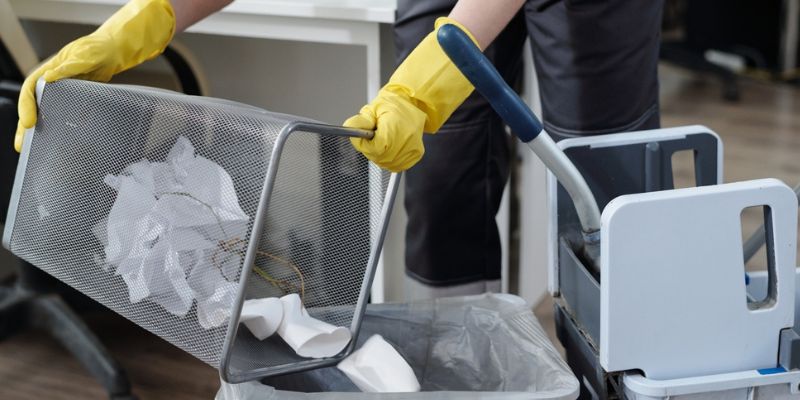
Step 9: Waste Stream Reset
A deep clean is prime time to recalibrate how trash flows through the building. You reassess container sizes, placement, and signage so recycling and landfill bins align with actual usage. Staff refreshers on separation rules prevent cross-contamination that dooms recyclables.
Old paperwork and expired toner cartridges need sanctioned disposal. Partnering with licensed shredding and hazardous waste vendors ensures compliance and clears storage rooms, reinforcing how to clean an office efficiently from the back closet to the boardroom.
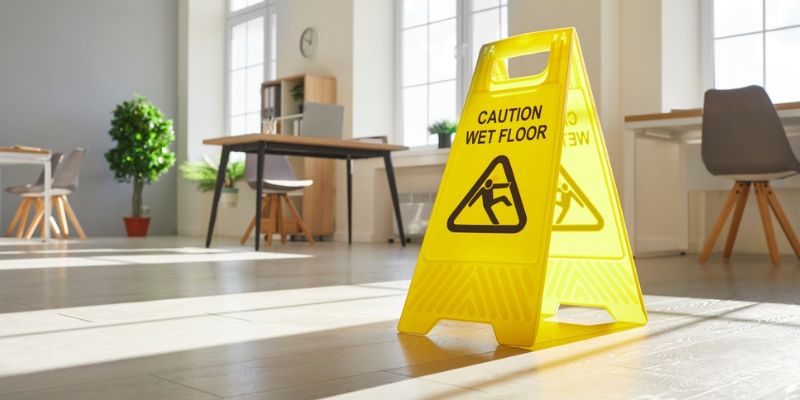
Step 10: Post-Clean Walkthrough, Documentation, and Maintenance Schedule
When the scrubbing ends, the management begins. Documentation preserves your investment by defining standards and frequency. Quality assurance checklists confirm no detail was missed, and photo documentation builds transparency.
Scheduling future deep cleans creates rhythm. Quarterly touch-ups in high-traffic zones and annual whole office resets prevent the “back to square one” feeling.
DIY Office Cleaning vs. Professional Cleaning Services
Relying on staff to wipe desks, empty bins, and run a quick vacuum can work for day‑to‑day tidiness, especially in smaller offices with limited traffic. It reinforces ownership of shared spaces and can trim minor costs, until time pressures, inadequate products, or improper techniques leave germs, allergens, and residue behind.
Without training on dwell times, chemical compatibility, or HEPA filtration, a DIY approach often becomes a surface-level shine that masks deeper accumulation. Productivity also suffers when employees juggle client deadlines with ad‑hoc cleaning, turning what looked like savings into hidden labor expenses and morale drain. Professional cleaning services like Jr Janitorial Services invest in hospital‑grade disinfectants, electrostatic sprayers, low‑moisture carpet machines, and microfiber systems that capture instead of redistributing dust.
More importantly, we document every step, checklists, photos, and QA reports, so you can verify that each high-touch surface, vent, and grout line received attention.
Keeping the Office Sparkling Between Deep Cleans
Encouraging employees to wipe down desks weekly, empty personal trash, and report spills immediately sustains the clean baseline. A simple office chore list taped inside the supply closet guides staff on quick touch-ups that never undermine productivity.
JR Janitorial Services transforms one-off scrubbing into a strategic office cleaning process tailored to your workflow. Our experts map high-touch zones, deploy hospital-grade tools, and set maintenance calendars that keep your environment healthy, impressive, and compliant.
If you’re ready to upgrade from reactive tidying to proactive care, contact us now to schedule a comprehensive assessment and see how deep cleaning an office can drive performance, morale, and brand reputation all year long.

